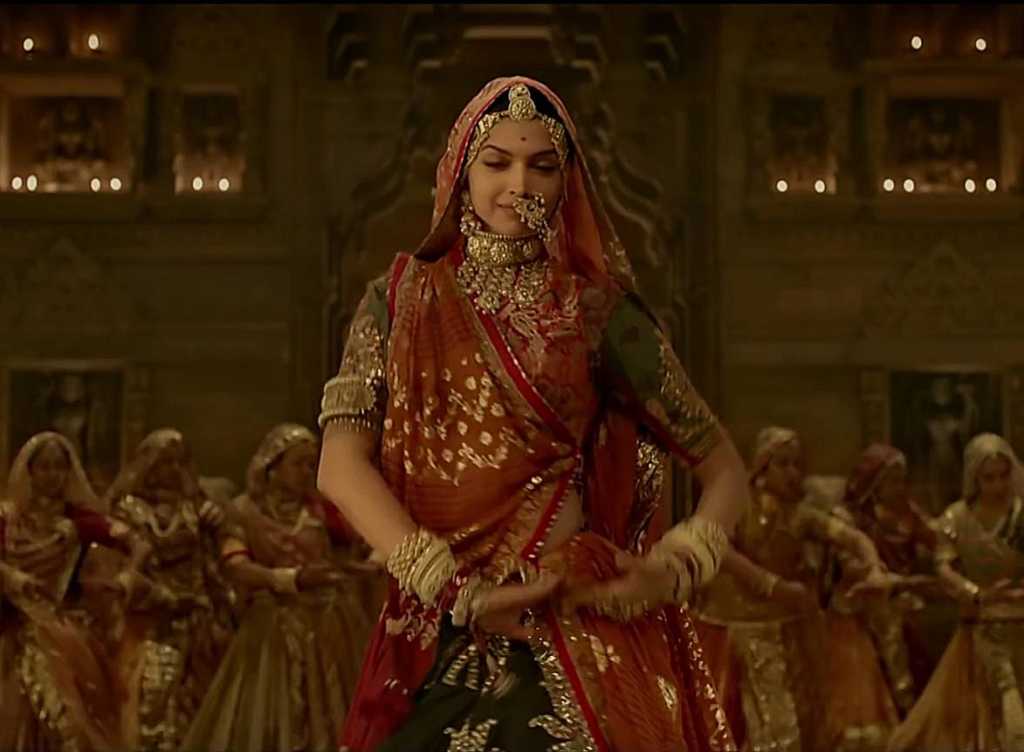It seems that Sanjay Leela Bhansali was not content with merely making the Peshwa Queen do a bawdy song and dance routine in Bajirao Mastani, that he had to have the Rajput Queen Padmavati do an obscene Ghoomar (if it can be called that) in SLB’s latest historical distortion called Padmavati. Sanjay Leela Bhansali, it would appear, specialises in Bollywood-ization of India’s rich cultural past. For instance, who can ever forgive him for making the great Peshwa Baji Rao, do a rambunctious ‘vaat laavli’ in Bajirao Mastani. That aside, the accursed movie reduced the entire life of one of India’s greatest warriors-the man who took the Maratha flag to Delhi and strove to reassert Shivaji’s Hindavi swarajya, to a laconic love story with Mastani.
Surely, Mastani was an important character in the life of Peshwa Baji Rao but to reduce the life of Peshwa Bajirao to a mere hyphenated existence as Bajirao-Mastani is criminal to say the least. And then there was abominable ‘Pinga’ dance that had the Peshwa Queen, played by Priyanka Chopra and Mastani, played by the markedly uncomfortable Deepika Padukone. Pinga, is a song that belongs to Maharashtrian cultural tradition. It is played and danced to for specific festivals. And here was Sanjay Leela Bhansali, doing a mash up of Pinga, with some Lavani item numbers and Bollywood tunes and making the Peshwa Lady, dressed as a nautch girl, gyrate alongside a common courtesan!
There was a lot of commotion when Bajirao Mastani hit the theatres in 2015. There was visible consternation at the obvious distortion of history that SLB intended to do through his enterprise. The descendants of Peshwas had hit out at SLB for the absolute disregard he had shown towards the people, their traditions and their cultural mores. And yet, the movie had hit the theatre and grossed several millions. For most of us Indians, who are quite illiterate about our own glorious past, swallowed the dung that SLB made in the name of artistic liberty. Sadly, our future generations will know the great Peshwa Bajirao through the lens of his love life alone. His victories in battles, his stratagems, his devotion to Chhatrapati Sahu- all will be forgotten and only the epithet of Bajirao-Mastani will stick.
A similar attempt is now being made with Queen Padmavati. Unlike the Peshwas, who lived in a time in recent history, Rani Padmini of Chittor lived centuries ago, in an era which was only beginning to witness the horrors unleashed by the Islamic invasion of India. Whether Alauddin Khilji was besotted with her or not is a question that only history can answer. However, it is a matter of accepted tradition that Rani Padmavati chose to commit Jauhar along with her attendants rather than submit herself to Khilji.
It is a matter of historical fact that Khilji’s troops fell upon Chittor and the Hindu inhabitants of the fort were ‘cut down like dry grass’ on Alauddin Khilji’s orders. Rani Padmavati’s legends has been fed and nourished by history over the centuries. So closely are history and tradition intertwined in this case that it is impossible to know where history ends and tradition begins. Rani Padmavati’s act of committing Jauhar rather than allowing Khilji to ravage her honour has been a part of Rajasthan’s cultural tradition. Not many would subscribe to the view that Rani Padmavati’s Jauhar is overrated as an act. The Jauhar was, at once, a supreme sacrifice, a call to honour and a revolutionary act that flew in the face of Khilji’s demands.
And here we have Sanjay Leela Bhansali, reduce Queen Padmavati, almost revered as a Goddess for her sacrifice, to a dancing girl. The much touted ‘Ghoomar’ song is as far removed from Rajputana’s cultural traditions as Kathak is from Bharatnatyam.
The clothes worn by Deepika Padukone, the dance performed by her are once again a stark reminder of Bollywoodization of cultural traditions. Unlike Ghoomar, which involves slow, gracious circling movements, with the dancer completely decked in traditional clothes, Ghoomar is reminscent more of the Kalbeliya dance which deals with sensual themes. And that is not all. The thought of having a Rajput Queen dance in the open, exposing her body for the world to see is an abomination and completely unrepresentative of the times that SLB claims to recreate.
There is some controversy on a love scene between Rani Padmavati and Alauddin Khilji, which has been denied by SLB in the past. If that is indeed the case, SLB deserves to be hauled over the coals for blatantly disrespecting traditions and hurting people’s sentiments.
We live in times when artistic freedom is used to silence critics. This was a tool that was deployed at the time of Bajirao Mastani and the same is being used now for those who pan Padmavati and point fingers at SLB’s shoddy research of Rajputana culture, traditions and history. ‘Hindutva Brigade’ is a common epithet that is hurled at those who criticize Padmavati for its obvious and glaring shortcomings. Sadly, Padmavati will see light of the day solely because we as a people don’t treasure our history. It will perhaps make millions as did the equally obnoxious Bajirao Mastani and then decades later, we’ll wonder why our children are ashamed of India’s glorious past.
